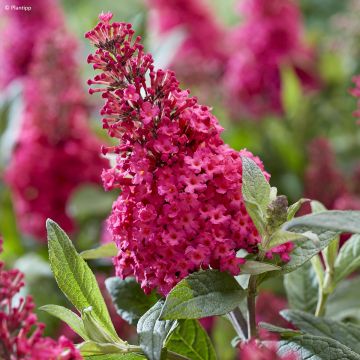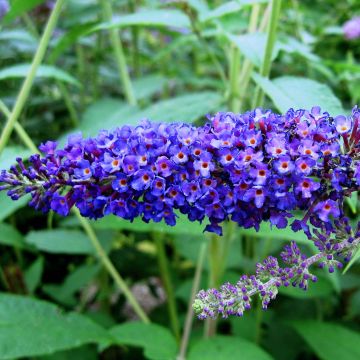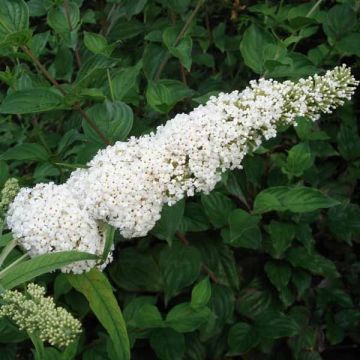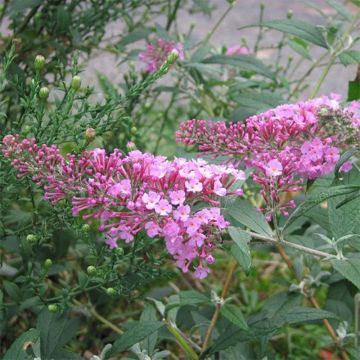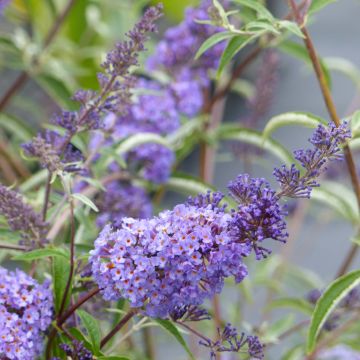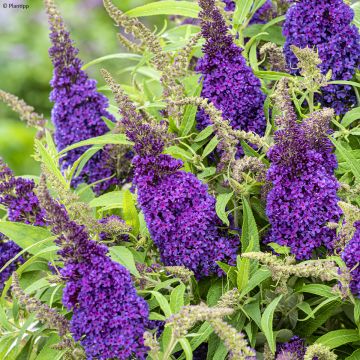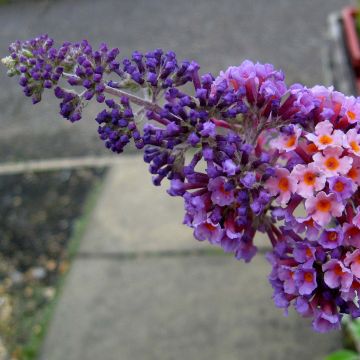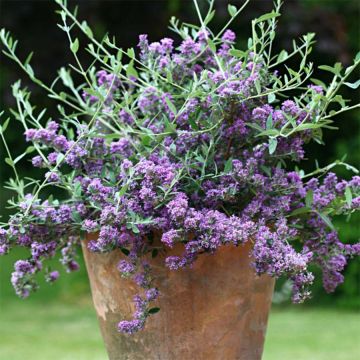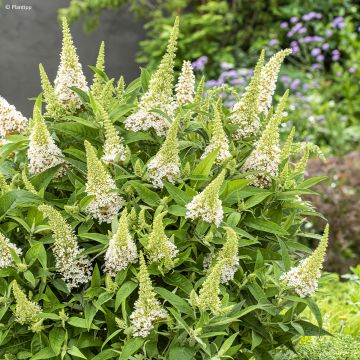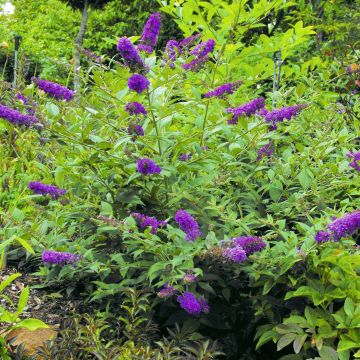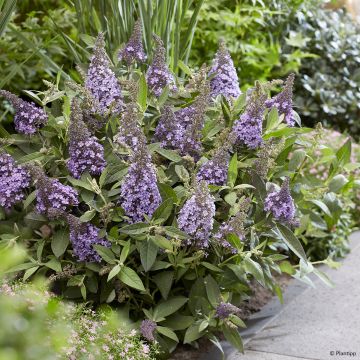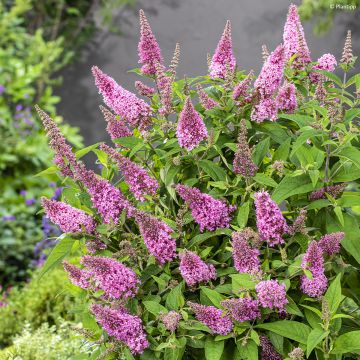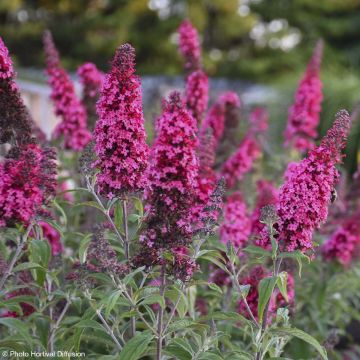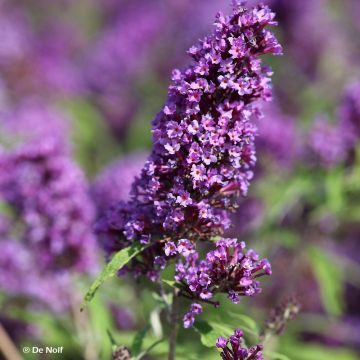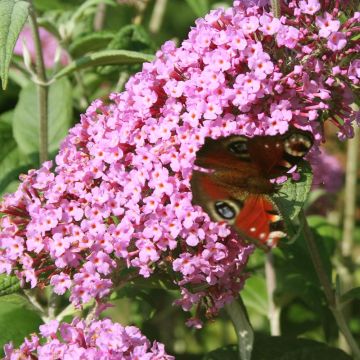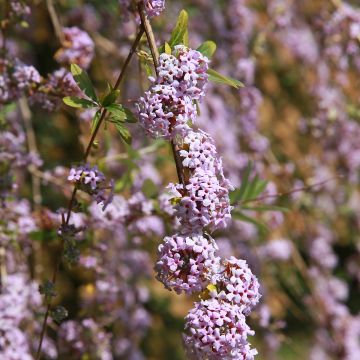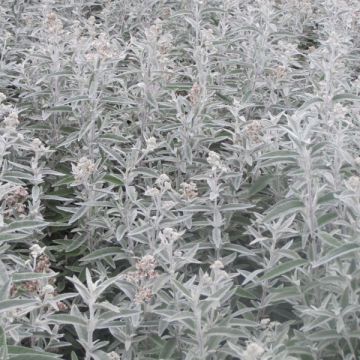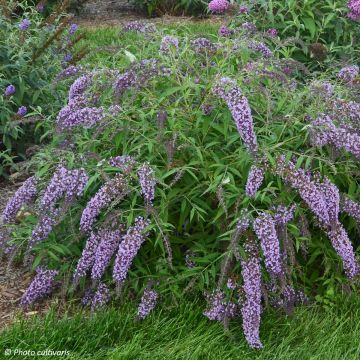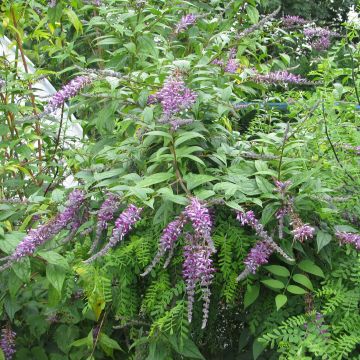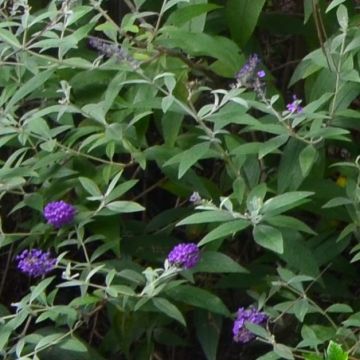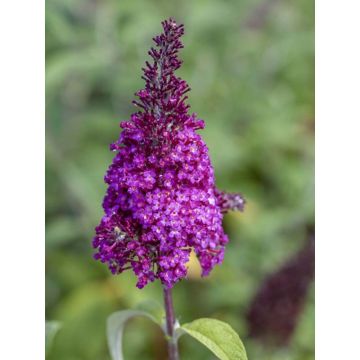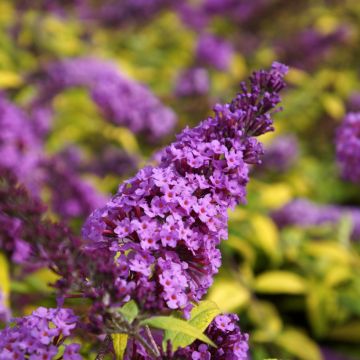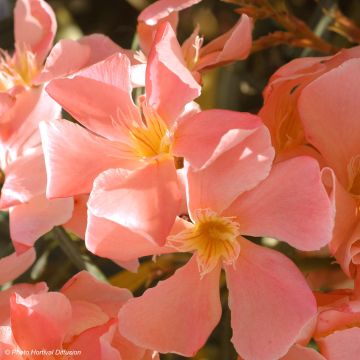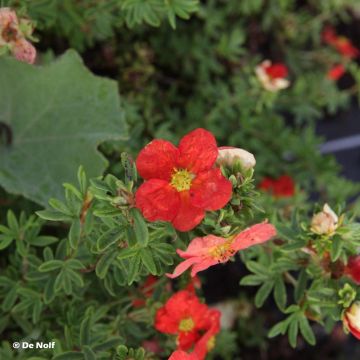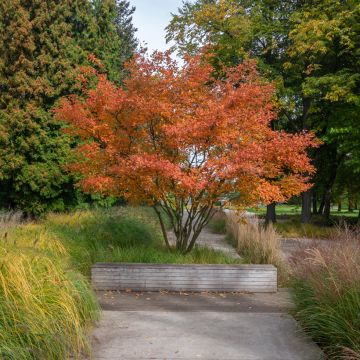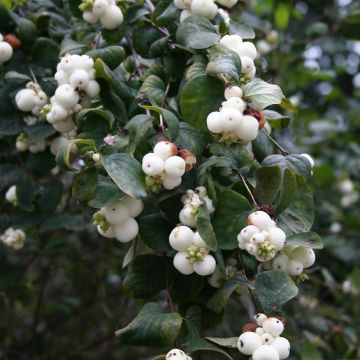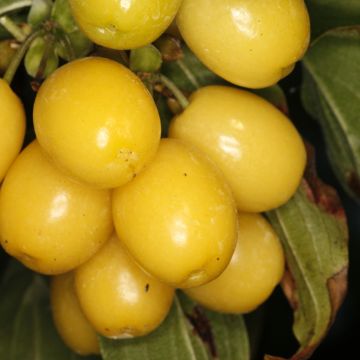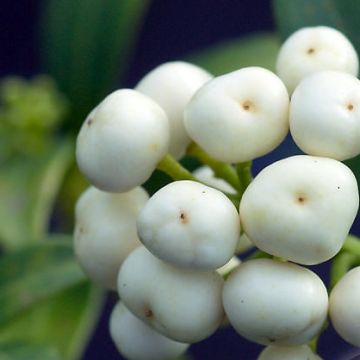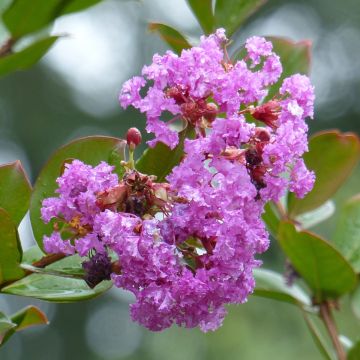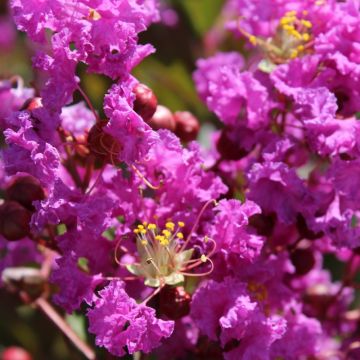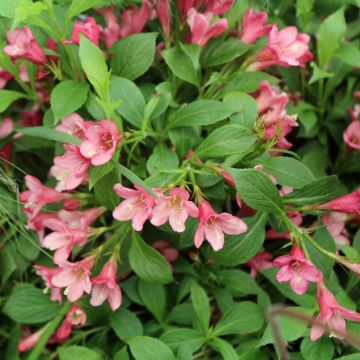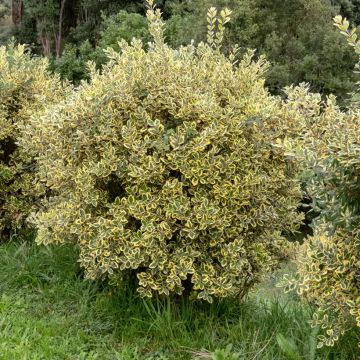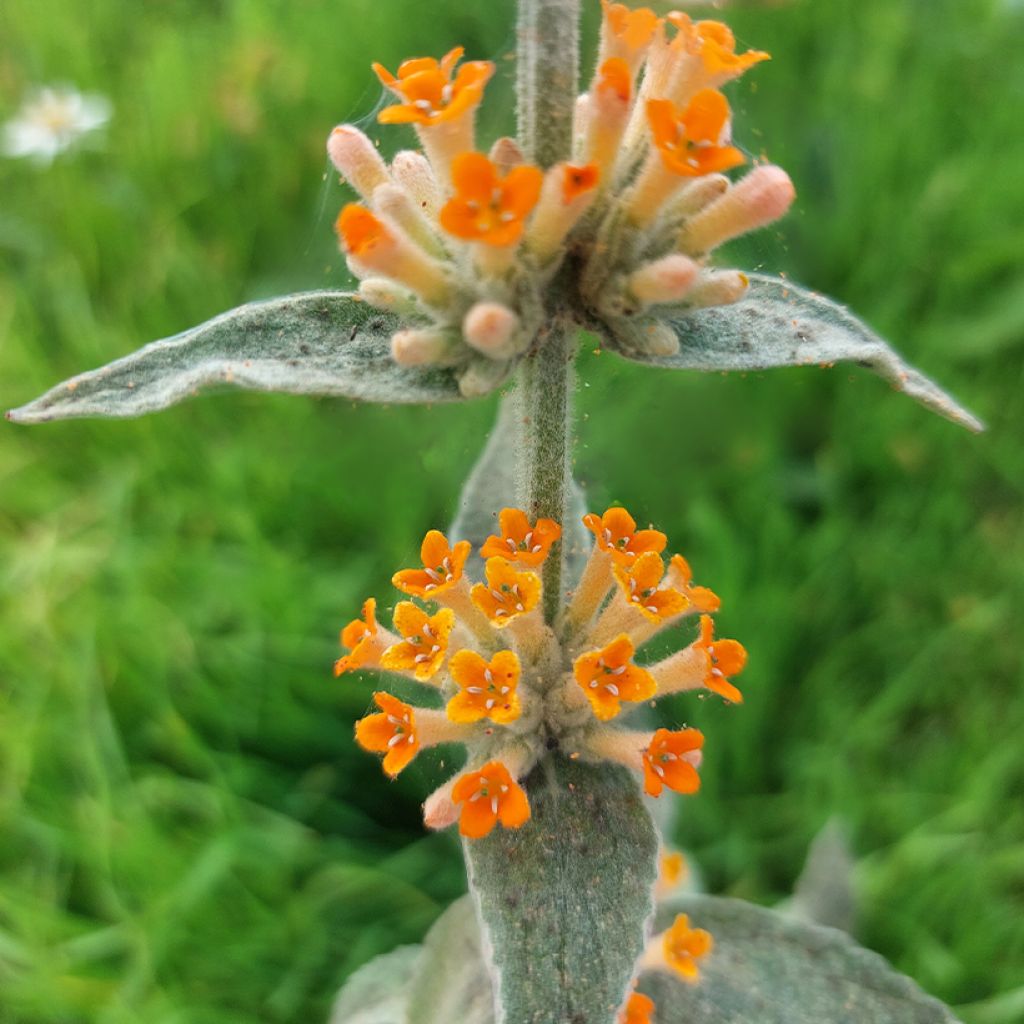

Buddleja Orange Sceptre
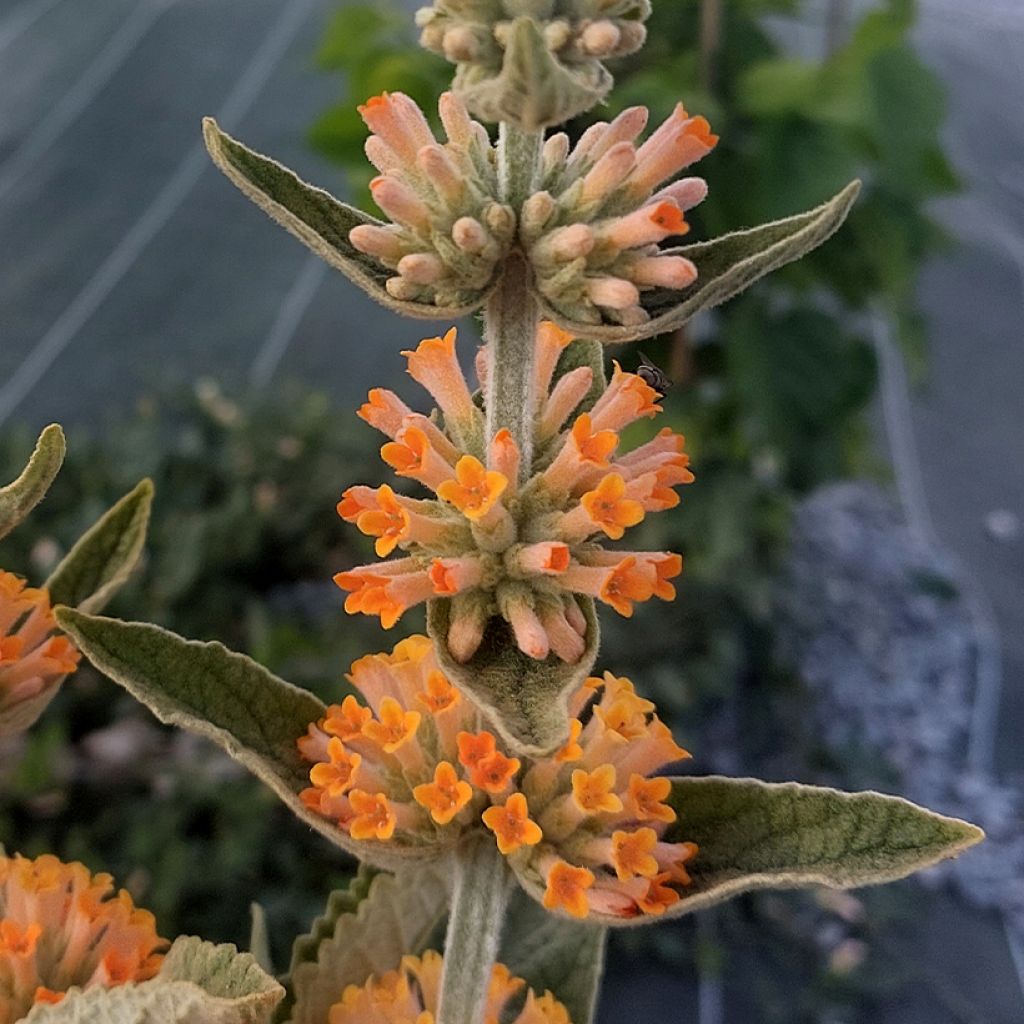

Buddleja Orange Sceptre
Buddleja Orange Sceptre
Buddleja stachyoides (x) tubiflora Orange Sceptre
Why not try an alternative variety in stock?
View all →This plant carries a 24 months recovery warranty
More information
We guarantee the quality of our plants for a full growing cycle, and will replace at our expense any plant that fails to recover under normal climatic and planting conditions.
From €5.90 for pickup delivery and €6.90 for home delivery
Express home delivery from €8.90.
Does this plant fit my garden?
Set up your Plantfit profile →
Description
Buddleia 'Orange Sceptre' is a variety of butterfly bush that is still rare in gardens. This medium-sized, compact bush is semi-evergreen and retains its leaves in regions with very mild winters. Its medium green foliage is greyish on the underside and covered with a pleasant fuzz. Its flowering is particularly ornamental, in the form of clusters of small flowers arranged in pagoda-like tiers on the branches. They are especially fascinating for their rare orange colour. Flowering covers a good part of the summer and autumn in temperate climates, and is even longer in mild regions.
The genus Buddleia, also spelled Buddleja, is now classified in the Scrophulariaceae family, along with hebe (shrubby speedwell), and Leucophyllum. While it is mainly known in our gardens through the species B. davidii, the popular butterfly bush (which is actually a shrub), the genus also includes numerous tropical and subtropical species, native to China and southern Asia, as well as Madagascar and South America.
'Orange Sceptre' is a hybrid obtained by American breeder John Lindstrom and his team at the University of Arkansas, as part of a scheme launched in 1999. They crossed B. stachyoides, the most widespread species of the genus in South America, with slightly orange-yellow flowers, with B. tubiflora, another botanical species native to the same continent, whose flowers are even more orange.
While it is visually similar to its parent B. stachyoides, the variety obtained from this cross stands out for the truly orange colour of its flowers. 'Orange Sceptre' forms a moderately-sized bush, ideal for small gardens and even container cultivation. It reaches approximately 2 to 2.4m (7 to 8ft) in height and 1.2 to 1.4m (4 to 5ft) in width. Its square-sectioned branches are hairy and bear opposite, decussate leaves, meaning they are arranged in pairs at right angles to each other at each node (forming a cross when viewed from above). These sessile leaves, directly attached to the branches without a petiole, are lanceolate, measuring 5 to 20cm (2 to 8in) in length and 2 to 7.5cm (1 to 3in) in width. Fuzzy to the touch, their upper surface is a medium green, while the underside is greyish. They are evergreen in mild climates, only dropping in winter due to freezing in colder regions.
The flowering is also particularly unique. It appears in the form of whorled inflorescences, made up of two groups (cymes) of small tube-shaped flowers that face each other. They look as though they have been placed on the leaves, which are also arranged in opposition. The clusters blooms at the ends of the branches, stacked on about ten levels. They can stretch for about 30cm (12in). These flowers have a lovely light orange colour, which is unique among Buddleias. The colour gives 'Orange Sceptre' a touch of resemblance to Leonotis leonurus, a South African perennial commonly found in Mediterranean gardens. With its South American heritage, this bush has inherited an endless flowering, covering almost the entire year in climates spared from frost (as long as the plant is growing, it is blooming!), and extending from July-August until late autumn in our temperate climates.
Less bulky than many varieties of the classic Buddleia davidii, 'Orange Sceptre' brings a breath of fresh air to the garden within the genus. Moderately hardy, it can withstand temperatures down to about -10°C (14°F), and can regrow from the stump when its vegetation has frozen. It will add a touch of exoticism to a flower bed. Pair it with Eucalyptus 'Baby Blue' to create astonishing colour contrasts, combining the blue foliage of this dwarf eucalyptus with the orange and green of 'Orange Sceptre'. You can also plant it alongside Embothrium coccineum, a semi-evergreen tree whose flamboyant red flowers have earned it the nickname "Chilean Fire Tree". In mild regions, Callistemon rigidus with its red bottlebrush-like flowers will also be a good companion for your buddleia.
Report an error about the product description
Plant habit
Flowering
Foliage
Botanical data
Buddleja
stachyoides (x) tubiflora
Orange Sceptre
Buddlejaceae
Cultivar or hybrid
Other Buddleja -Butterfly bush
Planting and care
Buddleia 'Orange Sceptre' enjoys sunny locations. Plant it in light, fertile, moist but well-drained soil. It performs less well in excessively dry sandy soils. However, it seems quite indifferent to soil pH, adapting equally well to acidic soils as to limestone soils. Similarly, it is resistant to urban pollution. Ideally, plant it in spring in cooler regions so that it has time to establish its roots before facing its first winter. Water once or twice a week initially to facilitate root development, then space out the watering to encourage deeper rooting. In mild climates, on the other hand, plant it in autumn so that it can benefit from winter rains and establish its roots well before summer. Water it during the first summer and in subsequent years in case of prolonged drought, as it does not tolerate dryness well. Its compact size makes it perfect for containers. It is easy to prune, if necessary, to limit its growth.
Planting period
Intended location
Care
-
, onOrder confirmed
Reply from on Promesse de fleurs
Hedge shrubs
Haven't found what you were looking for?
Hardiness is the lowest winter temperature a plant can endure without suffering serious damage or even dying. However, hardiness is affected by location (a sheltered area, such as a patio), protection (winter cover) and soil type (hardiness is improved by well-drained soil).

Photo Sharing Terms & Conditions
In order to encourage gardeners to interact and share their experiences, Promesse de fleurs offers various media enabling content to be uploaded onto its Site - in particular via the ‘Photo sharing’ module.
The User agrees to refrain from:
- Posting any content that is illegal, prejudicial, insulting, racist, inciteful to hatred, revisionist, contrary to public decency, that infringes on privacy or on the privacy rights of third parties, in particular the publicity rights of persons and goods, intellectual property rights, or the right to privacy.
- Submitting content on behalf of a third party;
- Impersonate the identity of a third party and/or publish any personal information about a third party;
In general, the User undertakes to refrain from any unethical behaviour.
All Content (in particular text, comments, files, images, photos, videos, creative works, etc.), which may be subject to property or intellectual property rights, image or other private rights, shall remain the property of the User, subject to the limited rights granted by the terms of the licence granted by Promesse de fleurs as stated below. Users are at liberty to publish or not to publish such Content on the Site, notably via the ‘Photo Sharing’ facility, and accept that this Content shall be made public and freely accessible, notably on the Internet.
Users further acknowledge, undertake to have ,and guarantee that they hold all necessary rights and permissions to publish such material on the Site, in particular with regard to the legislation in force pertaining to any privacy, property, intellectual property, image, or contractual rights, or rights of any other nature. By publishing such Content on the Site, Users acknowledge accepting full liability as publishers of the Content within the meaning of the law, and grant Promesse de fleurs, free of charge, an inclusive, worldwide licence for the said Content for the entire duration of its publication, including all reproduction, representation, up/downloading, displaying, performing, transmission, and storage rights.
Users also grant permission for their name to be linked to the Content and accept that this link may not always be made available.
By engaging in posting material, Users consent to their Content becoming automatically accessible on the Internet, in particular on other sites and/or blogs and/or web pages of the Promesse de fleurs site, including in particular social pages and the Promesse de fleurs catalogue.
Users may secure the removal of entrusted content free of charge by issuing a simple request via our contact form.
The flowering period indicated on our website applies to countries and regions located in USDA zone 8 (France, the United Kingdom, Ireland, the Netherlands, etc.)
It will vary according to where you live:
- In zones 9 to 10 (Italy, Spain, Greece, etc.), flowering will occur about 2 to 4 weeks earlier.
- In zones 6 to 7 (Germany, Poland, Slovenia, and lower mountainous regions), flowering will be delayed by 2 to 3 weeks.
- In zone 5 (Central Europe, Scandinavia), blooming will be delayed by 3 to 5 weeks.
In temperate climates, pruning of spring-flowering shrubs (forsythia, spireas, etc.) should be done just after flowering.
Pruning of summer-flowering shrubs (Indian Lilac, Perovskia, etc.) can be done in winter or spring.
In cold regions as well as with frost-sensitive plants, avoid pruning too early when severe frosts may still occur.
The planting period indicated on our website applies to countries and regions located in USDA zone 8 (France, United Kingdom, Ireland, Netherlands).
It will vary according to where you live:
- In Mediterranean zones (Marseille, Madrid, Milan, etc.), autumn and winter are the best planting periods.
- In continental zones (Strasbourg, Munich, Vienna, etc.), delay planting by 2 to 3 weeks in spring and bring it forward by 2 to 4 weeks in autumn.
- In mountainous regions (the Alps, Pyrenees, Carpathians, etc.), it is best to plant in late spring (May-June) or late summer (August-September).
The harvesting period indicated on our website applies to countries and regions in USDA zone 8 (France, England, Ireland, the Netherlands).
In colder areas (Scandinavia, Poland, Austria...) fruit and vegetable harvests are likely to be delayed by 3-4 weeks.
In warmer areas (Italy, Spain, Greece, etc.), harvesting will probably take place earlier, depending on weather conditions.
The sowing periods indicated on our website apply to countries and regions within USDA Zone 8 (France, UK, Ireland, Netherlands).
In colder areas (Scandinavia, Poland, Austria...), delay any outdoor sowing by 3-4 weeks, or sow under glass.
In warmer climes (Italy, Spain, Greece, etc.), bring outdoor sowing forward by a few weeks.

































